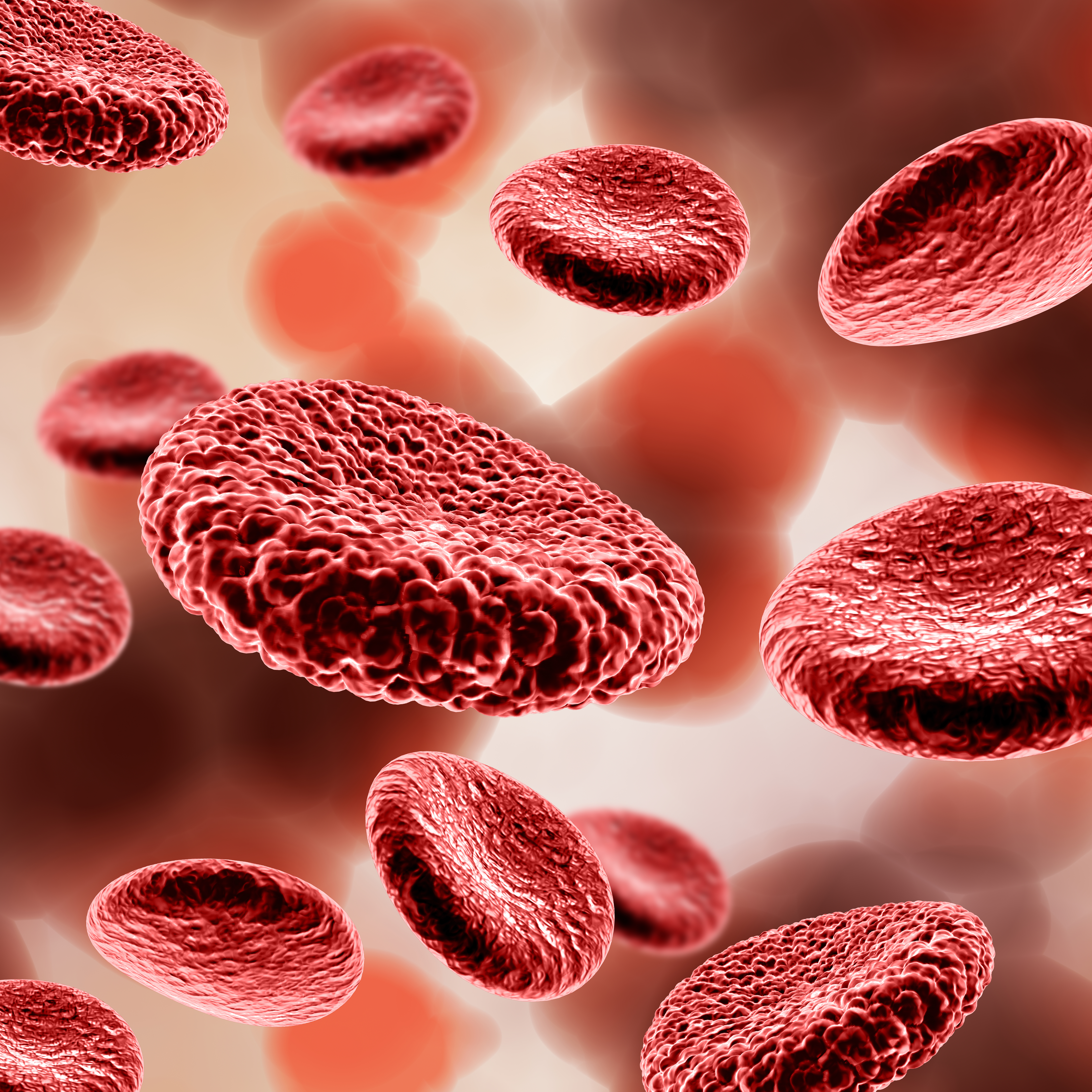Iron metabolism and peripheral eosinophil count do not correlate in the general population

Accepted: July 25, 2023
All claims expressed in this article are solely those of the authors and do not necessarily represent those of their affiliated organizations, or those of the publisher, the editors and the reviewers. Any product that may be evaluated in this article or claim that may be made by its manufacturer is not guaranteed or endorsed by the publisher.
Iron is a primary component of the human body and exerts many functions, mainly concerning red cells and the immune system. In addition, there is evidence that iron-deficiency anemia is associated with allergic diseases. Type 2 inflammation characterizes allergic diseases. Peripheral eosinophils are a reliable biomarker for type 2 inflammation. Therefore, the present study investigated the possible relationship between iron metabolism and peripheral eosinophils in a large population. Eosinophils also play important roles in immune and tissue homeostasis. A growing body of data suggests tissue eosinophils represent a plastic and heterogeneous population of functional sub-phenotypes, shaped by environmental (systemic and local) factors. The retrospective study included 2795 subjects who were afferent to the Clinical Chemistry Analysis Laboratory during the year 2022. Men had higher peripheral eosinophil count than women (p<0.001). Furthermore, stratifications for sex, eosinophil, and hemoglobin cut-offs showed that men had more eosinophil counts than women. However, there was no correlation between iron biomarkers and peripheral eosinophils. The present study did not demonstrate a clear relationship between iron deficiency and peripheral eosinophil count. Even if this large population may include allergic subjects and patients with different diseases, it seems that iron does not directly affect eosinophil count.
Akdis CA, Arkwright PD, Brüggen MC, et al. Type 2 immunity in the skin and lungs. Allergy 2020;75:1582-605. DOI: https://doi.org/10.1111/all.14318
Tuzlak S, Dejean AS, Iannacone M, et al. Repositioning TH cell polarization from single cytokines to complex help. Nat Immunol 2021;22:1210-17. DOI: https://doi.org/10.1038/s41590-021-01009-w
Tao Z, Zhu H, Zhang J, et al. Recent advances of eosinophils and its correlated diseases. Front Public Health 2022;10:954721. DOI: https://doi.org/10.3389/fpubh.2022.954721
Folci M, Ramponi G, Arcari I, et al. Eosinophils as major player in type 2 inflammation: autoimmunity and beyond. Adv Exp Med Biol 2021;1347:197-219. DOI: https://doi.org/10.1007/5584_2021_640
Huang Z, Nayak JV, Sun Y, et al. Peripheral blood T-helper cells and eosinophil populations in patients with atopic and nonatopic chronic rhinosinusitis. Am J Rhinol Allergy 2017;31:8-12. DOI: https://doi.org/10.2500/ajra.2017.31.4405
Tsuji K, Aoki A, Onodera A, et al. Characterization of eosinophils and natural killer cells in nasal polyps and peripheral blood in eosinophilic chronic rhinosinusitis patients. Allergol Int 2022:S1323-8930(22)00134-4.
Papaioannou AI, Loukides S, Bakakos P. Identification of asthma phenotypes using blood cell count. EBioMedicine 2022;77:103907. DOI: https://doi.org/10.1016/j.ebiom.2022.103907
Crespo-Lessmann A, Curto E, Mateus Medina EF, et al. Characteristics of induced-sputum inflammatory phenotypes in adults with asthma: predictors of bronchial eosinophilia. J Asthma Allergy 2023;16:95-103. DOI: https://doi.org/10.2147/JAA.S389402
Chan R, RuiWenKuo C, Lipworth B. Pragmatic clinical perspective on biologics for severe refractory type 2 asthma. J Allergy Clin Immunol Pract 2020;8:3363-70. DOI: https://doi.org/10.1016/j.jaip.2020.06.048
Akenroye AT, Segal JB, Zhou G, et al. Comparative effectiveness of omalizumab, mepolizumab, and dupilumab in asthma: a target trial emulation. J Allergy Clin Immunol 2023;S0091-6749(23)00144-6.
Ni S, Yuan Y, Kuang Y, Li X. Iron metabolism and immune regulation. Front Immunol 2022;13:816282. DOI: https://doi.org/10.3389/fimmu.2022.816282
Donker AE, van der Staaij H, Swinkels DW. The critical roles of iron during the journey from fetus to adolescents: Developmental aspects of iron homeostasis. Blood Rev 2021;50:100866. DOI: https://doi.org/10.1016/j.blre.2021.100866
Drury KE, Schaeffer M, Silverberg JI. Association between atopic disease and anemia in US children. JAMA Pediatr 2016;170:29-34. DOI: https://doi.org/10.1001/jamapediatrics.2015.3065
Rhew K, Oh JM. Association between atopic disease and anemia in pediatrics: a cross-sectional study. BMC Pediatr 2019;19:455. DOI: https://doi.org/10.1186/s12887-019-1836-5
Rhew K, Brown JD, Oh JM. Atopic disease and anemia in Korean patients: cross-sectional study with propensity score analysis. Int J Environ Res Public Health 2020;17:1978. DOI: https://doi.org/10.3390/ijerph17061978
Petje LM, Jensen SA, Szikora S, et al. Functional iron-deficiency in women with allergic rhinitis is associated with symptoms after nasal provocation and lack of iron-sequestering microbes. Allergy 2021;76:2882-923. DOI: https://doi.org/10.1111/all.14960
Roth-Walter F, Afify SM, Pacios LF, et al. Cow’s milk protein -lactoglobulin confers resilience against allergy by targeting complexed iron into immune cells. J Allergy Clin Immunol 2021;147:321-34. DOI: https://doi.org/10.1016/j.jaci.2020.05.023
Bartosik T, Jensen SA, Afify SM, et al. Ameliorating atopy by compensating micronutritional deficiencies in immune cells: a double-blind placebo-controlled pilot study. J Allergy Clin Immunol Pract 2022;10:1889-1902.e9. DOI: https://doi.org/10.1016/j.jaip.2022.02.028
Chiou B, Neely EB, Mcdevitt DS, et al. Transferrin and H-ferritin involvement in brain iron acquisition during postnatal development: impact of sex and genotype. J Neurochem 2020;152:381-96. DOI: https://doi.org/10.1111/jnc.14834
Sim M, Garvican-Lewis LA, Cox GR, et al. Iron considerations for the athlete: a narrative review. Eur J Appl Physiol 2019;119:1463-78. DOI: https://doi.org/10.1007/s00421-019-04157-y
Esposito R, Spaziano G, Giannattasio D, et al. Montelukast improves symptoms and lung function in asthmatic women compared with men. Front Pharmacol 2019;10:1094. DOI: https://doi.org/10.3389/fphar.2019.01094
Guo C, Bochner BS. Workup for eosinophilia. Allergy Asthma Proc 2019;40:429-32. DOI: https://doi.org/10.2500/aap.2019.40.4264
Copyright (c) 2023 the Author(s)

This work is licensed under a Creative Commons Attribution-NonCommercial 4.0 International License.
PAGEPress has chosen to apply the Creative Commons Attribution NonCommercial 4.0 International License (CC BY-NC 4.0) to all manuscripts to be published.


 https://doi.org/10.4081/jbr.2023.11352
https://doi.org/10.4081/jbr.2023.11352



